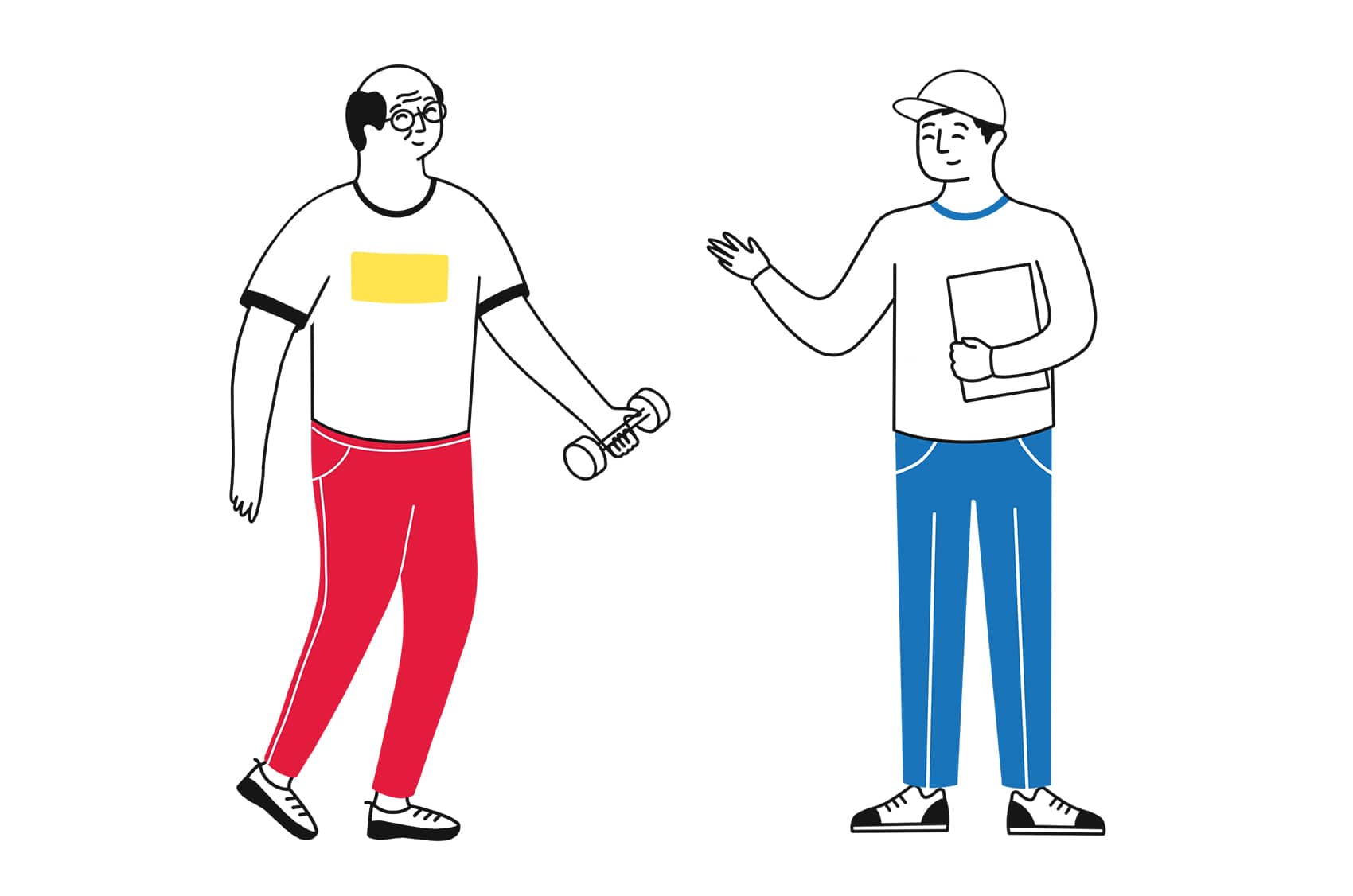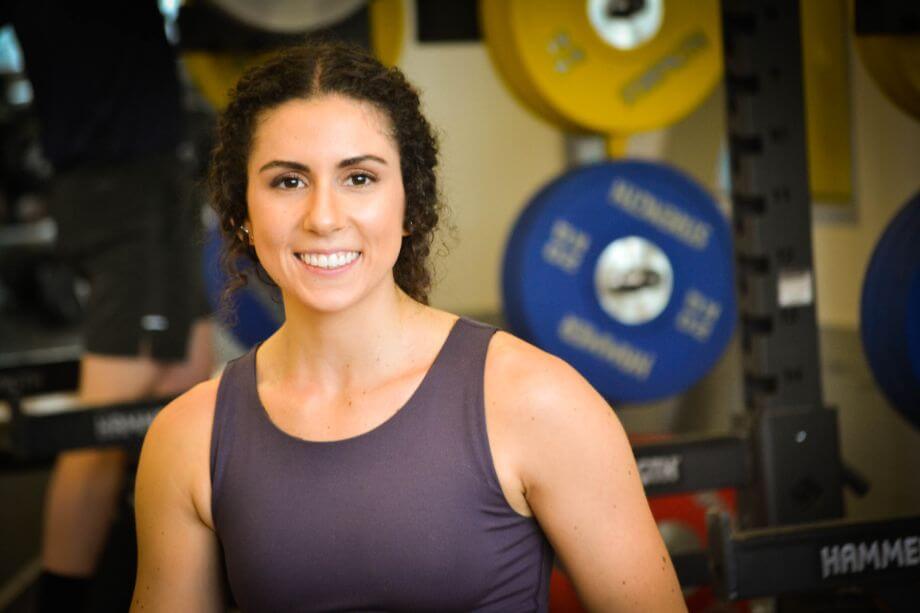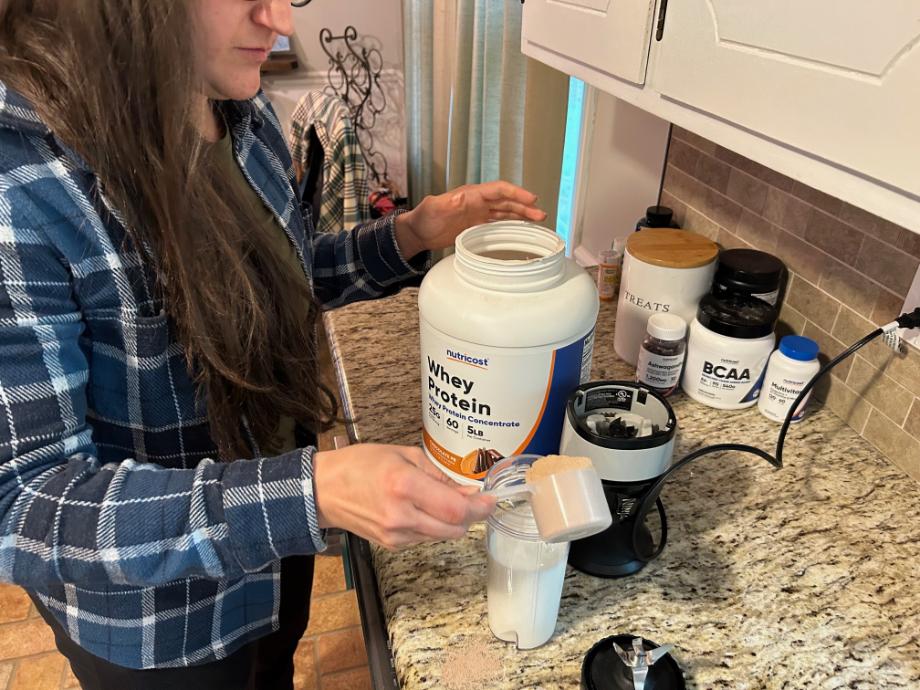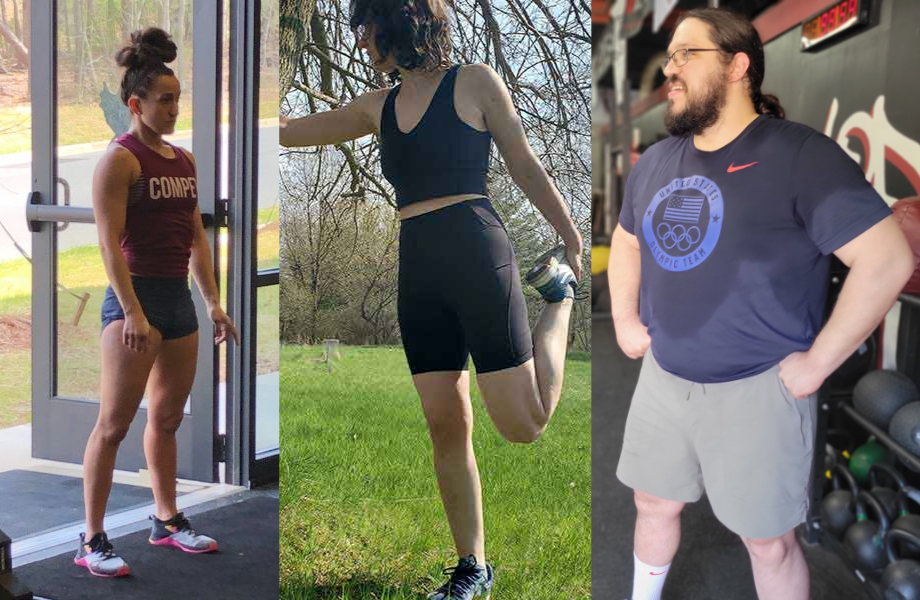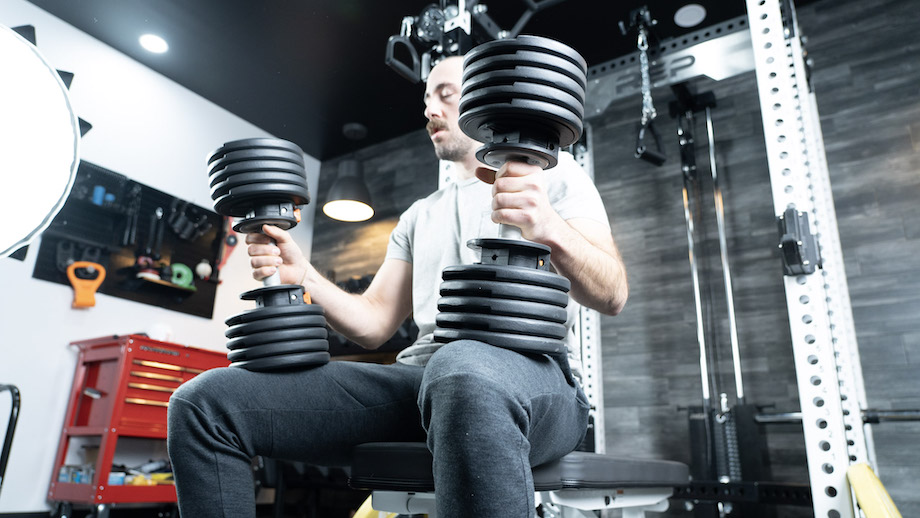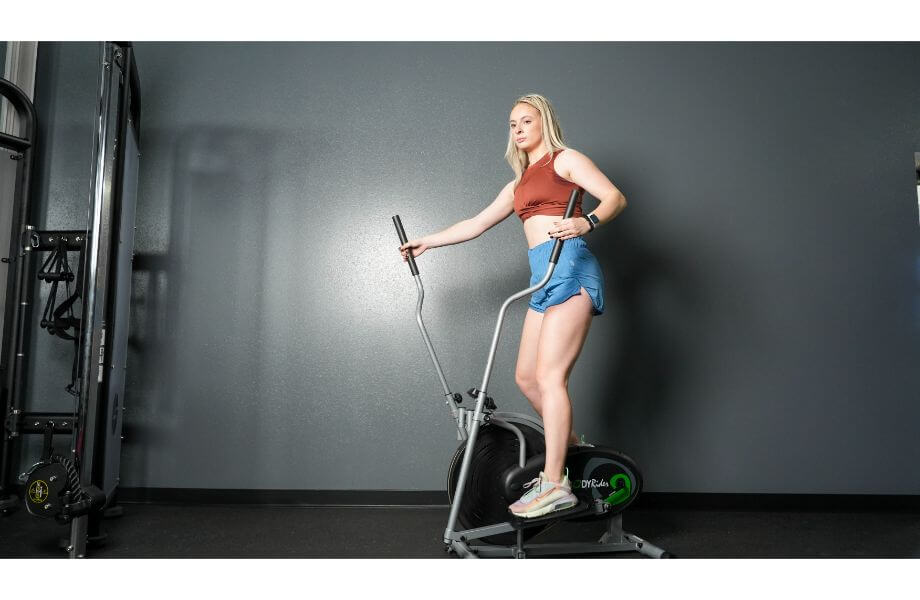When you get older, exercise is about more than building big muscles.
This article is intended for educational purposes only, and is not intended as a substitute for medical advice. For such advice, consult your physician or other qualified healthcare professional.
It’s never too late to start an exercise routine and enjoy becoming the fittest and healthiest you’ve ever been—not even if you’re in your 50s, 60s, or beyond. Everyone, regardless of age, can and will benefit from exercise, says Dr. Alyssa Kuhn, doctor of physical therapy.
“Exercise is tied to so many health benefits not only for your body but also your mind as well,” she says. “If you want to stay sharp, independent, and healthy, exercise is a must, no matter if you are 50 or 90.”
Whether you’ve never exercised before or you’re rekindling an old habit, here are nine big benefits of exercise for seniors to keep you motivated for the long haul. Plus, our Home Gym Community shares how they’ve adjusted their fitness routines with age and their main motivations for working out as they get older.
Physical Health Benefits of Exercise for Older Adults
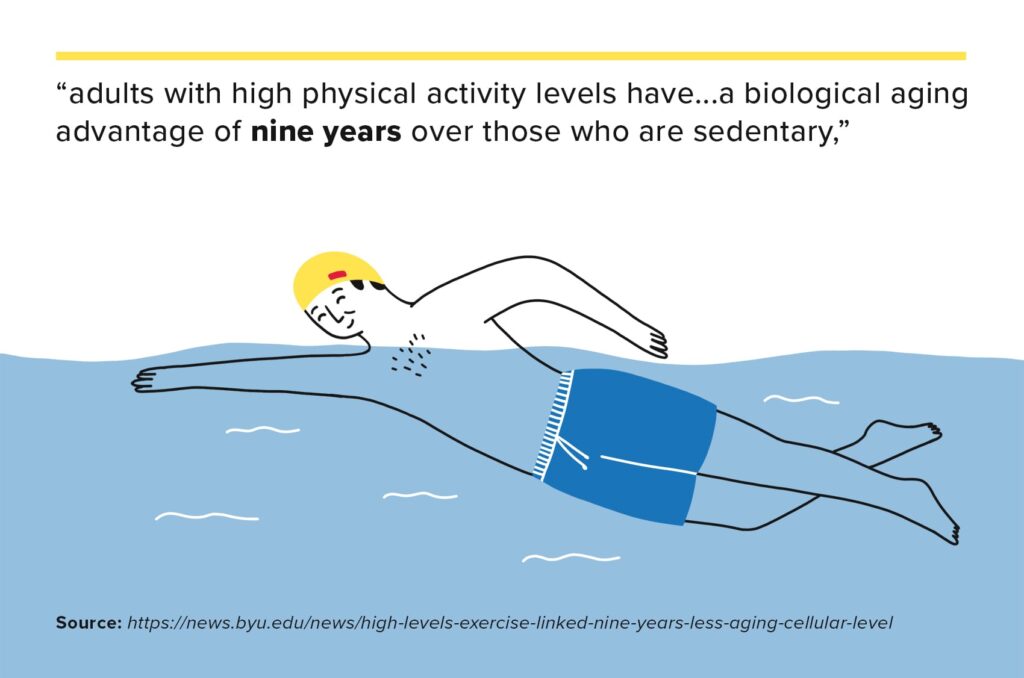
Bone Health: Preventing Osteoporosis
Osteoporosis is a top health concern for older adults, especially for women, who are more susceptible to bone loss later in life. As you get older, your bones begin to deteriorate faster than your body can create new bone tissue. This results in porous bones, which are weaker and vulnerable to fractures.
Weight-bearing exercise and resistance training are the top ways to combat osteoporosis. Weight-bearing exercise is any type of exercise that involves working against gravity. Examples include walking, hiking, climbing stairs, and dancing. Resistance training includes bodyweight strength training as well as weight training with equipment such as dumbbells.
RELATED: Best Treadmill for Walking
Muscle Health: Preventing Sarcopenia
In addition to strengthening your bones, exercise—especially resistance training—also strengthens your muscles and helps you build more muscle tissue. Like osteoporosis, sarcopenia is a degenerative condition that affects older adults, except sarcopenia is the loss of muscle, not bone. After middle age, adults tend to lose about 3% of muscle mass each year on average.
Exercise is the single most effective way to battle and reverse age-related muscle loss. Strength training is essential when it comes to muscle loss, as resistance training directly impacts factors that affect muscle growth. Specifically, lifting weights promotes the production of growth hormones and muscle protein synthesis (the process by which your body uses protein to make new muscle tissue).
Cardiovascular Health: Blood Pressure, Cholesterol, and More
Beyond bones and muscles, exercise also improves cardiovascular health and reduces your risk of heart disease.
Blood Pressure
Exercise has positive effects on blood pressure because it makes your heart stronger. A stronger heart can pump more blood with less effort, thus decreasing the amount of pressure on your blood vessels.
Most of the research on exercise and blood pressure looks at aerobic exercise, like walking and swimming, but some research also suggests that resistance training can lower blood pressure in the elderly, too. A program with combined cardio and strength training might be best at lowering blood pressure, according to some research.
RELATED: Best Treadmills for Seniors
Cholesterol
High cholesterol is a risk factor for heart disease, and managing your cholesterol is one way to maintain your health as you get older. There’s a linear relationship between the two, meaning that, up to a certain point, the more volume you do, the more your cholesterol levels improve.
Heart Disease
All types of exercise reduce your risk of heart disease (this is a “something is better than nothing” scenario), including heart attack, stroke, peripheral artery disease, coronary artery disease, atherosclerosis, cardiomyopathy, and more.
Both strength training and cardio exercise have benefits, but again, science suggests that a combined program with both types of training has the best outcomes on heart disease risk factors.
Maintain Independence: Strength, Balance, and Coordination
An often-overlooked benefit of exercise is its ability to simply allow people to take care of themselves. Seniors often lose their independence when day-to-day obligations become too difficult. Physical activity helps you maintain your independence longer.
Balance and Coordination
The risk of falling and injuring yourself increases as you get older. This is due to many factors, but largely a loss of muscle mass (causing weakness) and a loss of balance and coordination. Keeping your muscles strong reduces your risk of falling, and performing specific exercises to help with balance will improve your ability to take care of yourself in old age.
Activities of Daily Living
Thanks to all of the above—stronger bones, bigger muscles, a healthier heart, and better balance—regular exercise is vital to maintaining your independence. Many seniors require full-time care because they can no longer perform activities of daily living on their own.
Activities of daily living include basic day-to-day tasks, such as going to the bathroom, getting dressed, taking a shower, preparing food, cleaning, and generally moving about your home and community. Physical activity, or lack thereof, is directly related to seniors’ ability to perform activities of daily living.
Mental Health Benefits of Exercise for Older Adults
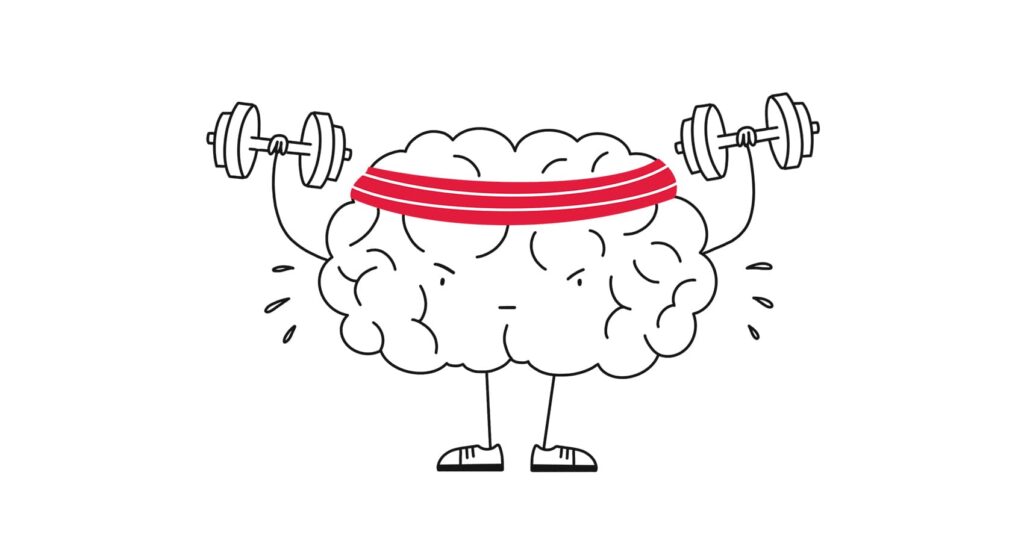
The benefits don’t stop with physical improvements. Strength training, and exercise in general, is shown to have robust effects on the mental and emotional health of older adults.
Decreases Risk of Depression
Seniors have an increased risk of developing depression, according to the Centers for Disease Control and Prevention (CDC). And like the CDC says: Depression in older adults may be common, but it’s not normal. The risk of depression increases as you age largely because the risk of other chronic illnesses increases with age—and depression is more common in people who have other health conditions.
Physical activity is one of the best lifestyle-related antidotes to depression in people of all ages. More research is needed to understand how exercise might be prescribed as a defense against depression, but there’s no shortage of evidence that regular physical activity can elevate mood in the short term and also help regulate your mood over time.
Helps You Find a Community
An unfortunate fact of life is that with age, often comes loneliness. Seniors are vulnerable to loss—of family, friends, partners, and pets—and it can be a serious detriment to their mental health. Fitness is a good way for seniors to discover a new community and find like-minded individuals to spend time with. Whether you join an in-person gym or invest in a community-driven platform like the MIRROR, you’re sure to build new connections when you pick up a fitness habit.
Improves Memory
Memory loss is a major concern for the older population. Luckily, there are a number of ways to combat memory loss as you age and, you guessed it, exercise is one. Physical activity has been linked to improved memory, of both the spatial and verbal varieties. (Spatial memory is your ability to remember things like where you left your car keys or how to get to your mom’s house without needing directions. Verbal memory is your ability to remember what you read and hear.)
Exercise is also shown to improve working memory, which refers to the way your brain stores, analyzes, and changes information during cognitive tasks. An example of working memory is doing a math problem and “seeing” the numbers in your head, or in a common case here at Garage Gym Reviews, using instructions to assemble a piece of fitness equipment and then using that memory to assemble a similar piece of equipment without instructions.
Increases Cognitive Function
Not to get overly excited, but recent research showed that a single bout—specifically a 20-minute session on a stationary bike—can boost cognitive function in older adults. Obviously, there are a lot of caveats here (like the fact that the boost is temporary and the classic “more research is needed”).
But still. How cool! This finding suggests that the mental health benefits of exercise appear much more quickly than previously thought. On top of that, exercise is shown to reduce the risk of various types of cognitive decline, including dementia, later in life.
Improves Quality of Life
All exercise improves quality of life through a marriage of all of the above benefits. Between stronger bones and muscles, a healthier cardiovascular system, better coordination and balance, better memory, and a healthy social life all put the “golden” in your golden years.
How the GGR Community Adjusts Their Home Fitness Training As They Age
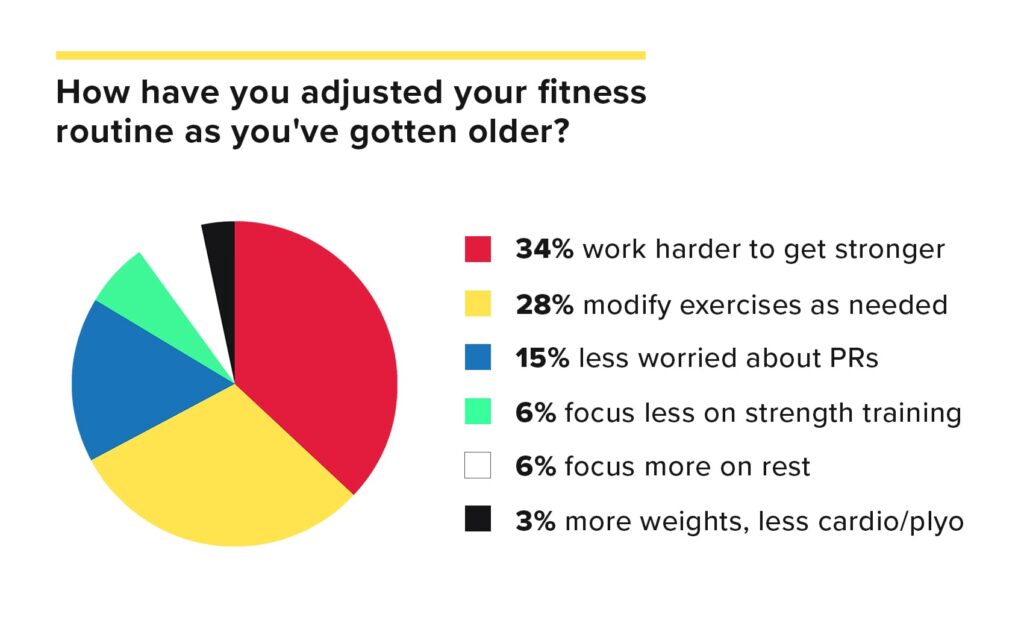
The team at Garage Gym Reviews wanted to understand our community members’ reasons for working out and how they’ve adjusted their workout routines as they get older. So naturally, we polled our Home Gym Community group on Facebook.
We asked two questions:
- How have you adjusted your fitness routine as you get older?
- What’s your main motivation for working out?
Here are the results.
Adjusting Routines With Age
- 34% of people say they work harder to get bigger and stronger
- 28% say they listen to their body and adapt accordingly
- 9% say they lift lighter weights and do more reps, and that they aren’t worried about personal records
- 6% say they focus less on strength training and more on aerobic exercise or other activities
- 6% say maintenance is more important than PRs
- 3% say they take more rest days
- 3% say they incorporate more rest between sets
- 3% say they lift more weights and do less cardio or plyometric exercise
Motivation for Working Out
Our Home Gym Community members shared a number of different reasons for working out, now and as they get older. Here are screenshots showing what our community had to say.
To enjoy their golden years:
To continue pursuing their hobbies:
To avoid health issues common in the family:
To stave off common medical conditions among older adults:
To simply stay in shape:
Exercising as an Older Adult: Frequently Asked Questions
To help you better understand exercising as an older adult—and doing it as effectively and as safely as possible—the Garage Gym Reviews team consulted some experts in the industry. This Q&A with physical therapists, medical doctors, and fitness professionals who specialize in training older adults will help you get started on the right track.
How much exercise do older adults need?
For those new to exercise, three days per week is a great place to start, says Dr. Alyssa Kuhn, physical therapist, osteoarthritis expert, and CrossFit Level-1 Coach. “This will of course depend on the intensity of your workout and what type of workouts you’re doing,” she clarifies.
“For example, if you’re walking or doing another form of low-impact aerobic activity, you may not need as many rest days,” Dr. Kuhn says. “If you’re starting strength training with weights, you may need to take a day or two in between workouts to recover and allow your muscles to repair.”
You can gradually increase your workout frequency to five days per week, Dr. Kuhn says, so long as you don’t feel like you’re overtraining or, in the case of medical considerations or injuries, aggravating any existing conditions.
To get a little more specific, public health guidelines (from the American College of Sports Medicine and the Centers for Disease Control and Prevention) include 60 to 75 minutes of vigorous aerobic activity per week or 150 minutes of moderate aerobic activity per week, plus two to three strength training sessions.
I haven’t worked out in a long time. Where do I start?
Dr. Kuhn recommends spending at least a few sessions with a trusted physical therapist or movement specialist (like a personal trainer or corrective exercise specialist) who can appropriately evaluate important factors that will affect your exercise capabilities. A movement professional will evaluate things like range of motion in all of your joints, muscular imbalances, core control, flexibility, balance and coordination, and posture.
Too often, people injure themselves trying to start a new workout program without prior evaluation or guidance, Dr. Kuhn says. For most people, a good place to start is a combination of aerobic activity and light strength training. The most important thing upon starting is to not do too much, too soon, and disallow your body a chance to recoup.
Is it too late for me to exercise and still get all of the benefits?
It’s never too late for anyone to start exercising and reap the benefits. It doesn’t matter how old you are or how out of shape you think you are: Studies show that seniors experience positive changes in response to exercise, including cardio and strength training. Benefits include explicit health improvements, such as increased muscle mass, as well as qualitative benefits, such as improved quality of life.
Do I need any special equipment?
Nope! You can get a great strength training workout with just your body weight. Resistance exercises such as squats, lunges, push-ups (and any modified version), and many more, can significantly improve your strength. For comfort, it’s worth it to invest in a good yoga mat to do exercises on.
It’s always helpful to have fitness equipment on hand, and you may find that using strength training equipment expedites your results. Before you start using dumbbells, resistance bands, or any other equipment, consult a personal trainer or study up on proper technique yourself.
Should I consult with my doctor beforehand?
If you have any existing medical conditions or injuries, yes, you should consult with your doctor before starting an exercise program. Consulting your doc is not a bad idea even if you don’t have any existing medical conditions.
Should I change my diet if I am going to strength train?
In general, unless you’re actively trying to lose weight, you will probably need to increase your calorie intake when you start an exercise program. For strength training specifically, increasing protein intake will help with muscle protein synthesis, the biological process that must take place for your muscles to grow. Everyone’s nutrient needs differ, so keep in mind that these are simply general recommendations.
What types of exercises are best for seniors to focus on?
Just like your diet won’t look the same as everyone else’s, neither will (nor should) your workout program. In general, however, most seniors will benefit from a mix of aerobic exercise such as walking or swimming, low-impact strength training with a focus on compound movements, and some sort of flexibility, mobility, and balance training such as yoga.
How often should seniors engage in strength training?
Dr. Tim Shuckers, physical therapist, says older adults should have at least two strength training workouts per week. Not every session has to be a weight training session, he says: Strength training for seniors can also include yoga, Pilates, bodyweight training, and working with resistance bands.
The Main Takeaway
The bottom line is that it’s never too late to start strength training (or exercising in general). Exercise, and strength training in particular, poses a number of benefits for older adults: increased muscle mass, increased bone density, improved heart health, improved balance and coordination, reduced risk of chronic disease, and so much more. All of these benefits come together to provide the ultimate benefit older adults are looking for: The ability to maintain their independence and enjoy life free from pain and illness in older age.


